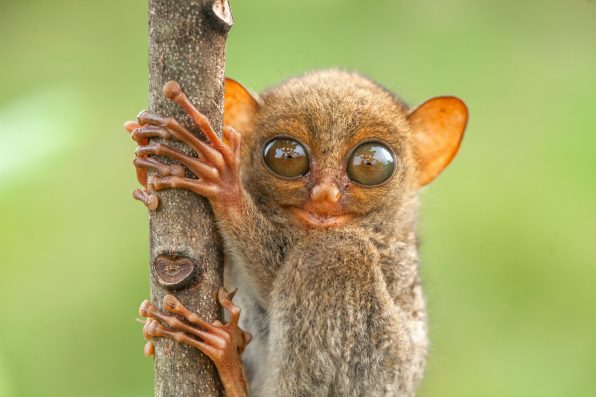Even Though Tarsiers, One Of The Oldest Nocturnal Primates Alive Today, Were Discovered During The Eighteenth Century, Not Many People Know About The Existence Of This Tiny Creature

Tarsiers are tiny nocturnal primates that were discovered in the eighteenth century. Although they were found so long ago, their existence is little known.
They used to be more widespread but are now confined to the dense forests of Southeast Asia, including the Philippines, Malaysia, Indonesia, and Brunei.
Fossil records have revealed that tarsiers once lived all over the world and date back to at least 55 million years, making them one of the oldest primates alive today.
With unique features such as their enormous eyes, long fingers, and velvety fur, it’s almost impossible to look away from them. Aside from their physical characteristics, they also have many interesting habits that make them such marvelous creatures.
There are sixteen different species of tarsier, and they range in size from about three and a half to six inches long. Their tails can be twice the length of their round, furry bodies.
Like owls, tarsiers can rotate their heads 180 degrees. Additionally, their long limbs let them move like lemurs, leaping through the trees where they make their homes. In fact, the length of their legs and tarsals (ankle bones) is where tarsiers get their name.
The tarsier’s fingers are also incredibly long. The ends of their fingers have small, sticky pads that are used for hanging onto branches to help them hunt for food.
Tarsiers are the only primate species on the planet that is entirely carnivorous. They typically feast on insects, lizards, snakes, frogs, bats, and birds.
One of the most notable features of tarsiers is their eyes. Out of any mammal, tarsiers have the largest eyes relative to their body size. Since their eyes are so big, they are unable to rotate them, which is why they have the ability to twist their necks in either direction.

abdul gapur dayak – stock.adobe.com – illustrative purposes only, not the actual tarsier
As mentioned earlier, tarsiers are nocturnal. However, their eyes lack the reflective layer that most other nocturnal animals have to help them see in the dark. As a result, the tarsier’s eyes had to grow bigger to compensate for their lack of night vision.
According to Myron Shekelle, a biology instructor and researcher at Western Washington University, this absence of the reflective layer in the tarsier’s eyes offers some insight into the evolution of primates.
He stated that tarsiers may have once been diurnal primates, which means they were active during the day, so they had no need for the reflective layer in their eyes. Somewhere along the line, they reversed course and became nocturnal again, but they had already lost their reflective layer.
Scientists have long debated over what family of primates the tarsiers belong to. In recent years, evidence has shown that they are the cousins of apes, monkeys, and humans.
So, we are actually related to tarsiers! But don’t count on ever meeting one. Tarsiers have very specific needs, so they don’t do well in captivity. Habitat conservation is the only shot we have to save them from becoming extinct.
Some tarsier species have been listed as endangered or vulnerable due to their small size, human activity, and destruction of their habitats. If researchers can preserve their habitats and monitor their activity, they may be able to help bring up tarsier populations.
If true crime defines your free time, this is for you: join Chip Chick’s True Crime Tribe
It Turns Out That Her Boyfriend Is Married, And She Also Suspects He Has A Son
Sign up for Chip Chick’s newsletter and get stories like this delivered to your inbox.
More About:Animals





